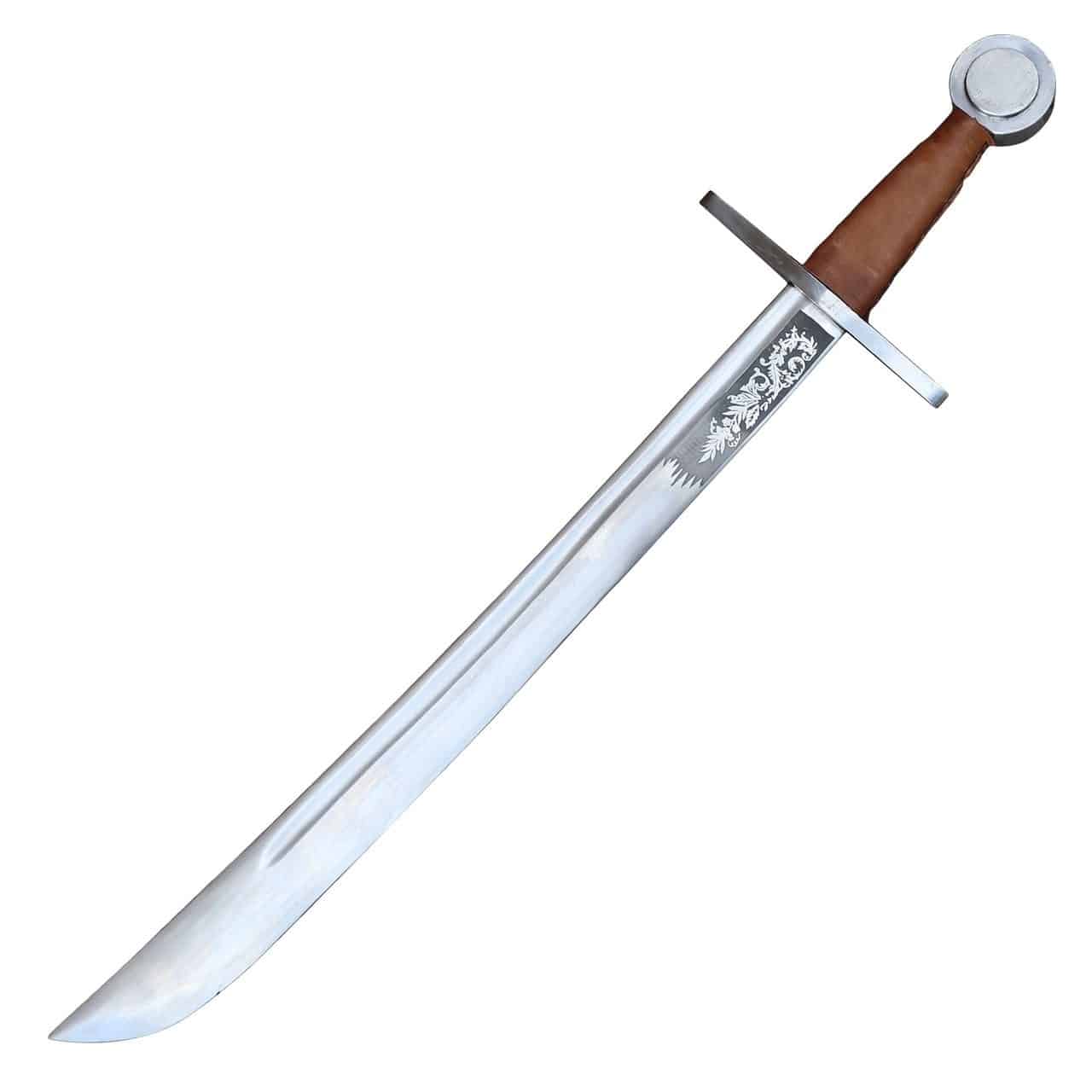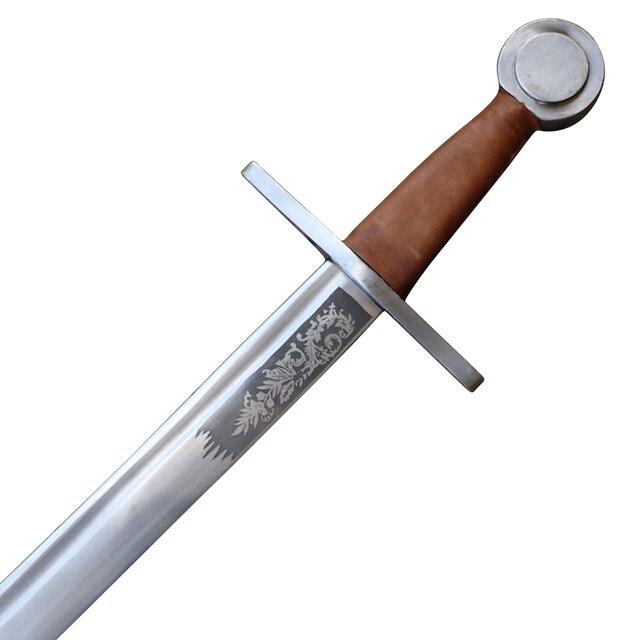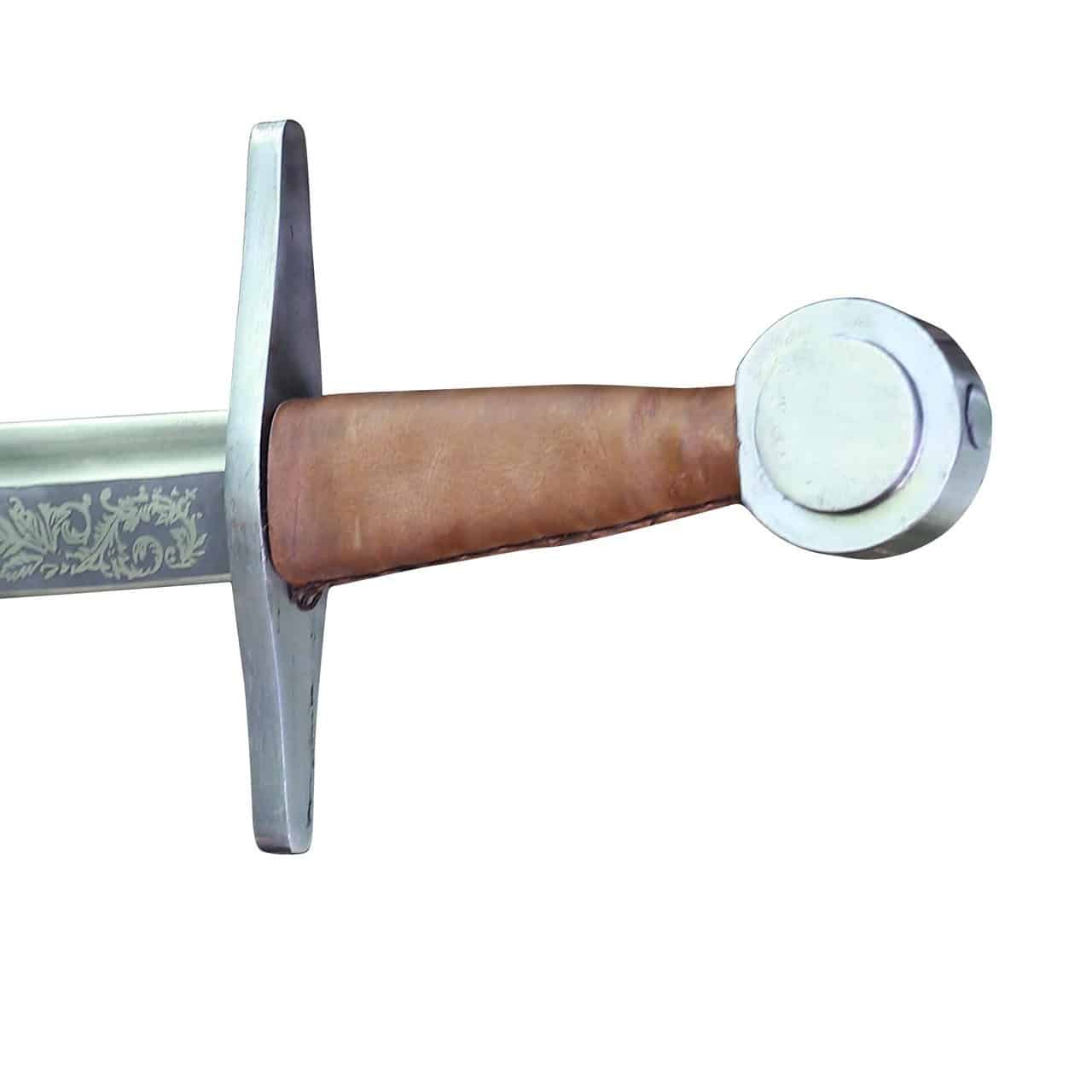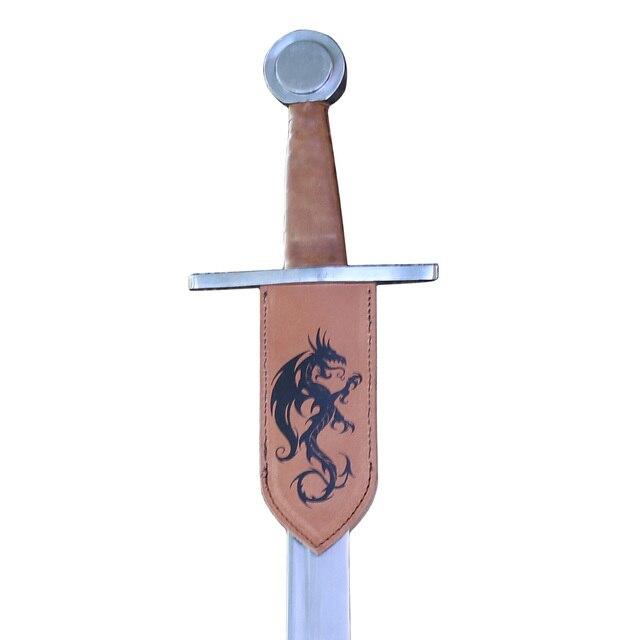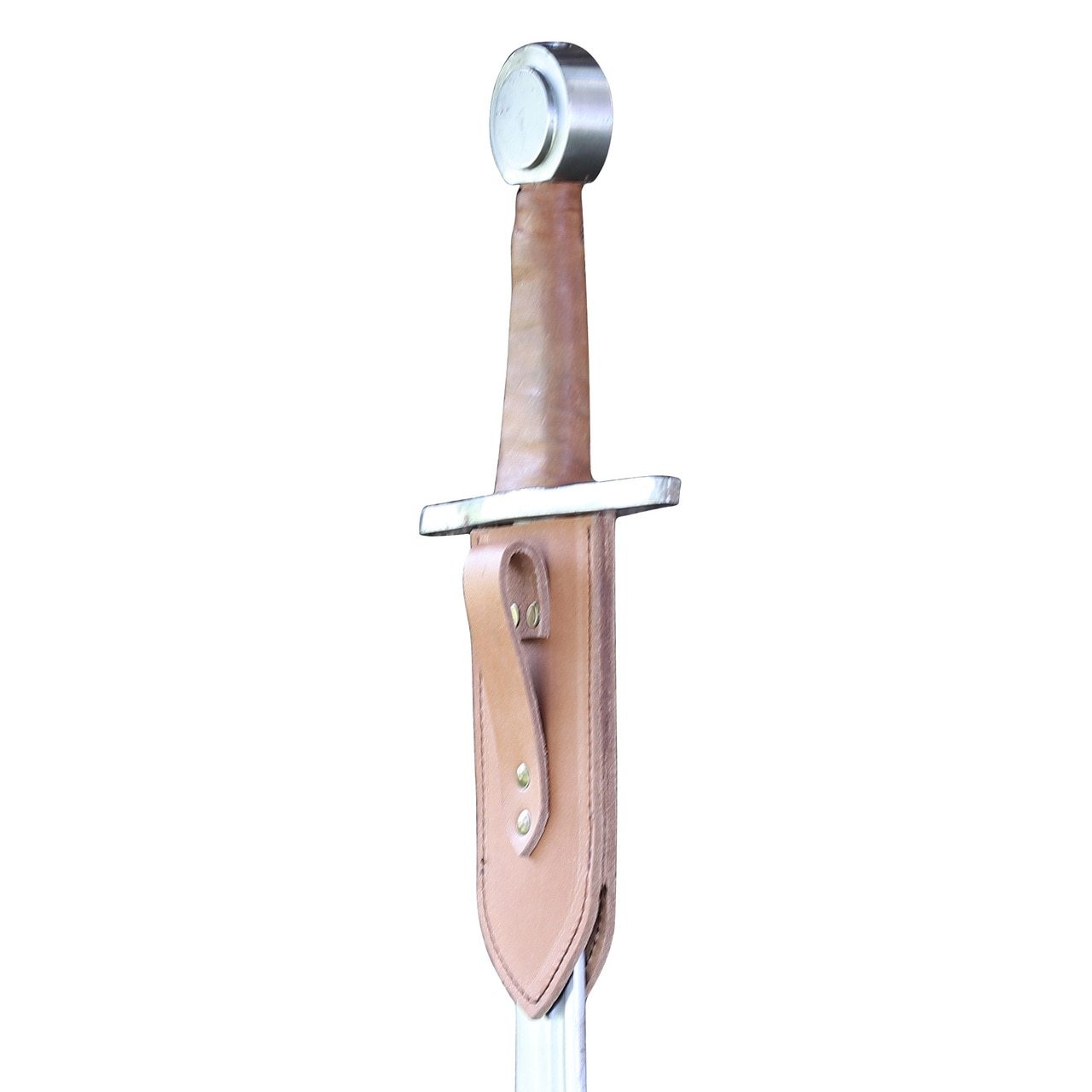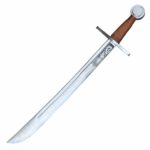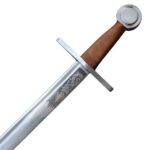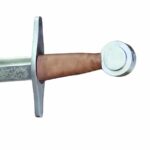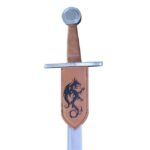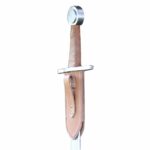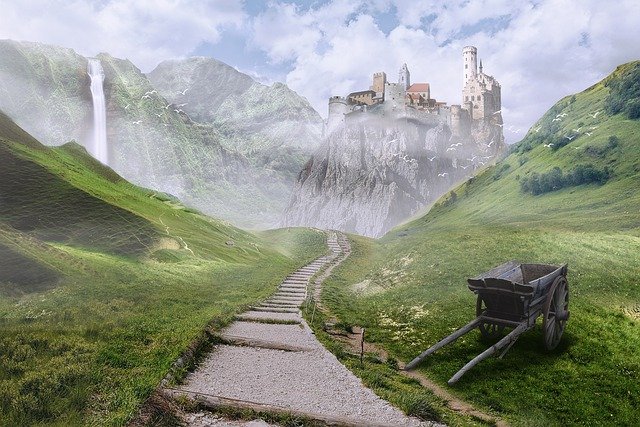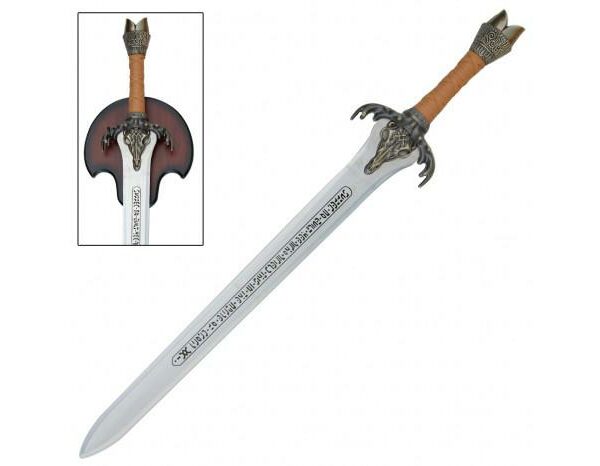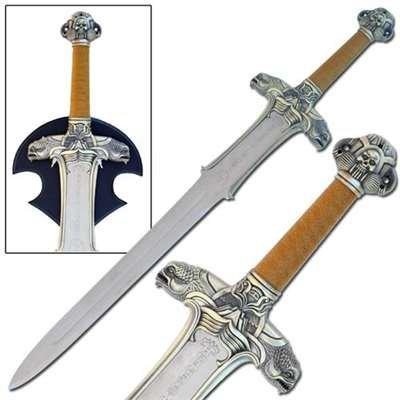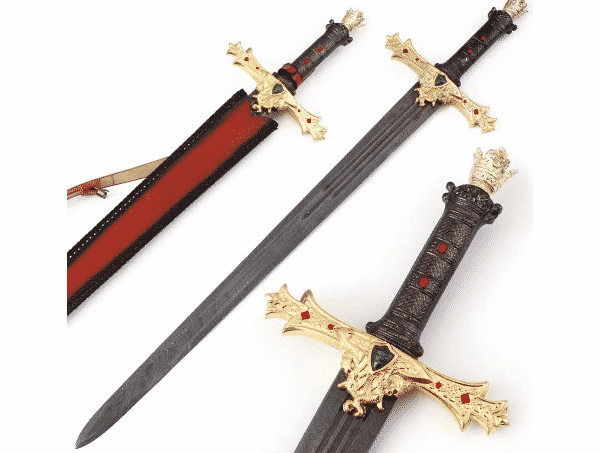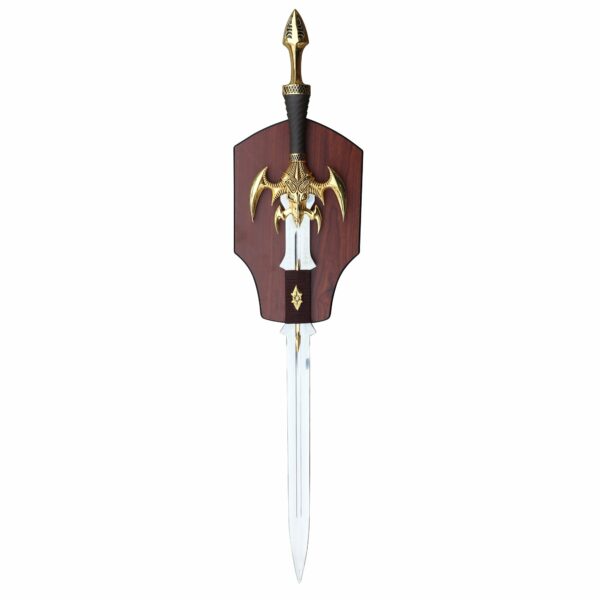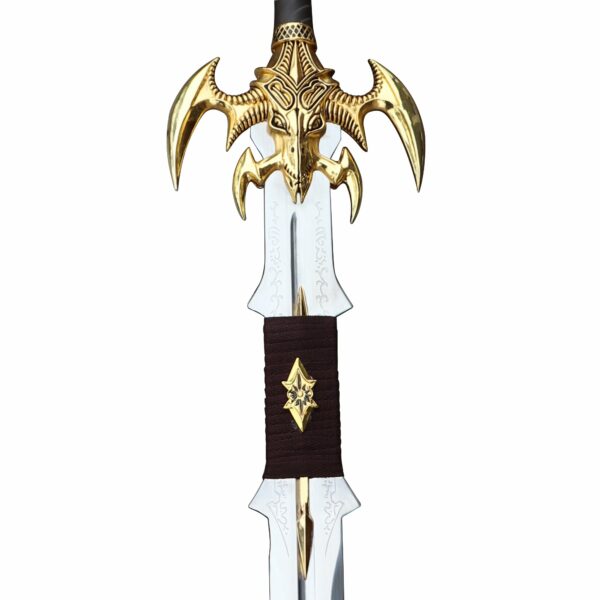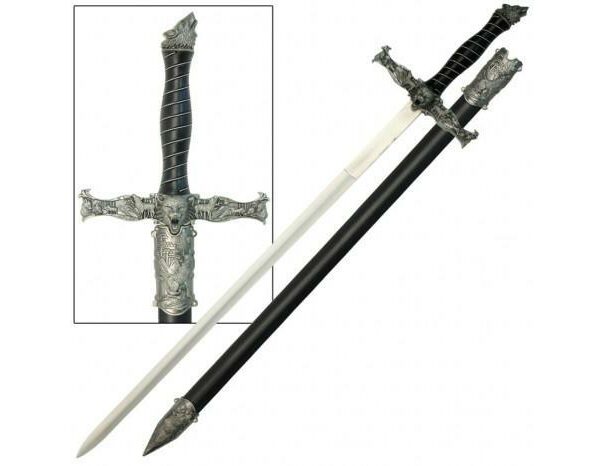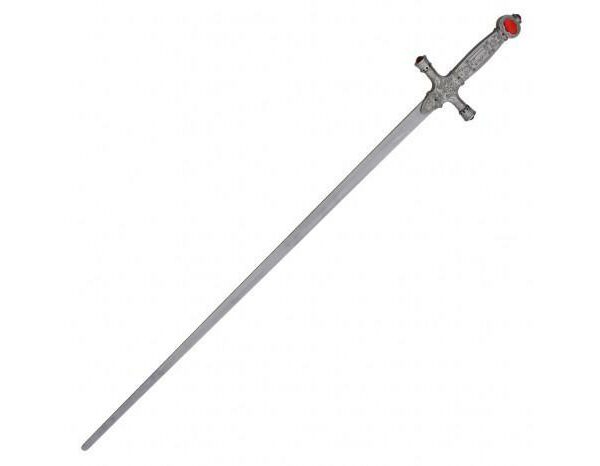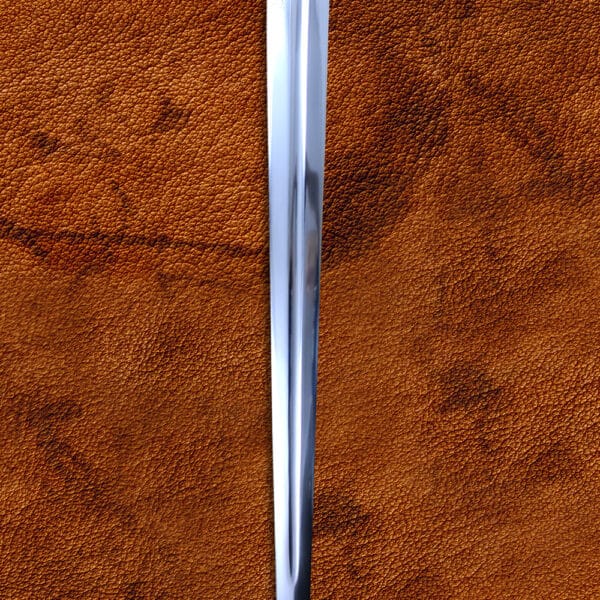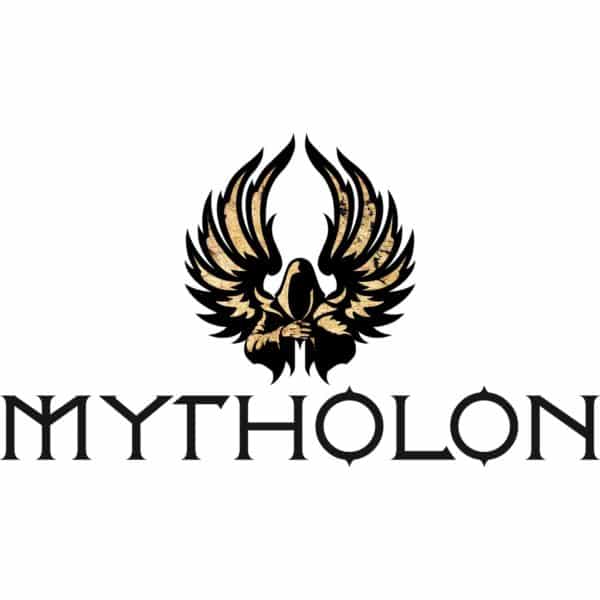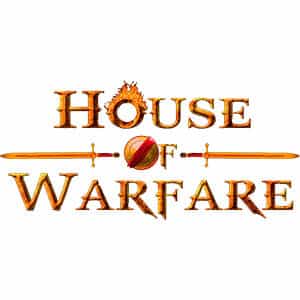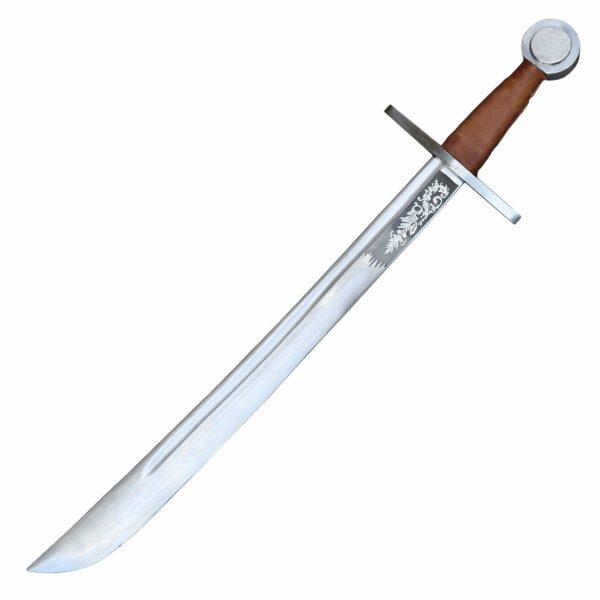Brute Force and Elegance Intertwined: The Fantasy Falchion
A falchion is a warrior’s weapon, through and through. Unlike a longsword, falchions were wielded by fighters from all walks of life, especially the more common soldiers. When it comes to LARPing, this makes the fantasy falchion an incredibly versatile weapon.
The fantasy falchion is a one-handed sword, so is relatively short compared to your typical longsword. The blade itself has a single primary sharp edge. The blunt edge of the blade is straight, while the sharper edge is curved. The blade is tapered, meaning that it is thinner near the tip than the guard.
The blade itself has a deep fuller that sits very close to the straight, blunt edge and runs down three quarters of the length of the sword. This fuller serves to lighten the blade slightly without compromising the structural integrity of the sword. Near the guard, the blade is etched with an intricate floral pattern that elevates the sword’s design.
The construction of the entire sword has a heavy focus on sturdiness. It has a full tang, which means that the metal of the blade continues past the crossguard to make up the handle. This ensures that the sword has no weak points where it can easily snap, which is especially important with a functional sword.
The steel crossguard is a simple affair, elegant and practical. The grip is wrapped in leather so that you can comfortably hold the sword, and the hand is topped off with a solid steel circular pommel. Both the guard and pommel have been securely welded to the tang.
If you hadn’t guessed by now, the fantasy falchion is a functional and exceptionally hardy sword. It’s a beauty to wield, designed to be an amazing cutting sword while retaining admirable thrusting ability. However, it’s also been made with obvious attention to detail.
Finally, the fantasy falchion comes with a leather holster which features a dragon print. This holster can be attached to a belt and will allow you to comfortably carry the sword around, while still showing it off in all its glory.
The fantasy falchion is a great weapon for both Cosplay and LARP events, allowing you to really finish off your warrior’s look. While this is a fantasy blade, the design is grounded in a good level of realism, which makes it ideal for all kinds of characters. As a functional and sturdy sword, it’s also appropriate for more rigorous use, which is ideal for certain LARP events.
However, this is also a beautiful weapon which has been made with care. Collectors, both with a leaning towards fantasy and a love of swords in general will certainly appreciate this aspect of the fantasy falchion. The fine detailing and careful construction make it a great display piece.
Swords of Fantasy: The Variety Within the Genre
Fantasy, much like medieval history, is packed with all kinds of weapons, many of them weird and wonderful in their own way. However, while these weapons might have very elaborate and sometimes unwieldy designs, and can incorporate magic powers, many of them are based on historical weaponry.
We can’t go through a comprehensive list of every weapon in fantasy, because that would take a lifetime, but we can at least look at some of the favourite choices.
The Two Handed Swords of Fantasy: A Balance of Strength and Skill
You don’t need to have read a lot of fantasy to have realised that swords are by and large the most common weapon in fantasy. Even settings such as Star Wars feature swords being wielded by skilled heroes and villains.
But even in this category, we see definite trends emerge. Some types of swords are used more commonly than others or are mostly used by certain archetypes. So, let’s dive a little deeper.
Longswords: The Unofficial Sword of Heroes
If your character wields a sword, there is a high chance that they will be wielding some form of longsword. If we’re going to be more specific, many heroic characters prefer hand-and-a-half swords, or bastard swords.
This means that they can wield them comfortably with either one hand or both hands, which lends to a wonderful sense of drama when they’re losing a fight and so dramatically switch to a two handed stance for more power. Just try not to wonder why they didn’t start the fight that way, if it’s so effective.
Bastard swords are also much more adaptable than the larger longswords, as they can be wielded along with a shield. Many characters use them like this, such as Eragorn after he receives Brisingr in the Inheritance Cycle series.
Historically, longswords were wielded primarily by knights and soldiers who fought in full plate. Their two-handed nature meant that they couldn’t be wielded with a shield, which meant that the fighter would be sacrificing a valuable defensive option unless they also had excellent armor.
Because of this, longswords are associated with the upper classes. You needed money to be able to afford this kind of sword, and even more money to afford the plate armor that mitigates the loss of a shield. This, in turn, makes longswords a noble weapon.
In classic fantasy, nobility and heroism often went hand in hand. A longsword was often used to signify a character as a rightful king, usually making them a hero. Famous examples of this character would be King Arthur and Aragorn, both heroic kings who are marked by their longswords.
Of course, this isn’t a rule. All kinds of characters use longswords in many different fantasy worlds. But if a hero or villain uses a longsword, don’t be surprised to find that it’s magical in some way or marks the protagonist out. Although sometimes a sword is just a sword.
In a fight, longswords need both a measure of strength and skill to wield effectively, which makes them a great tool for characterisation, depending on how the character uses their sword. They are also very versatile, being effective at cutting, slashing, and thrusting.
Greatswords
Following on from longswords, we have another two handed sword. The greatsword, however, is a different beast entirely. You see, longswords are often considered weapons of skill and grace, with a balance of speed and strength being required to wield them.
However, greatswords require much more physical strength to wield effectively. Obviously, skill and training are involved, but characters who wield greatswords are generally powerhouses on the battlefield. For them, strength is emphasised over skill.
Villainous characters often wield greatswords, but they’re common among heroic figures as well. Barbarian archetypes usually wield axes and blunt weapons, but if they do carry a sword, it’s likely to be a greatsword. Obviously, there are exceptions to this. Conan the Barbarian typically wields a one-handed sword, for example.
The Game of Thrones series features two famous greatswords. The Sword of the Mountain is wielded by the famously brutish and strong Gregor Clegane, who is capable of wielding it with only one hand. Ice is a greatsword wielded by Ned Stark and contains enough metal to produce two longswords.
An interesting example of a hero using a greatsword might be Garion from David Eddings Belgariad series. He isn’t enormously strong, but his greatsword is enchanted to allow him to wield it effectively. However, he does still fight with the characteristic barbaric frenzy of the archetypal greatsword wielder.
Magically light greatswords do crop up in fantasy quite a lot, as they allow characters to wield comically enormous weapons without having the requisite powerful build. Other good examples of these types of sword are the shard blades from Brandon Sanderson’s Stormlight Archives and Cloud’s comically huge Buster Sword featured in some of the Final Fantasy games.
One-Handed Swords: From Falchions to Rapiers
There are options for those characters who prefer to have an off-hand, however. Some characters prefer to fight with a sword and a shield for more defensive options, while others leave their off-hand free or wield a dagger.
Their choice often depends on the type of sword that they’re wielding, as well as what kind of character they are.
Falchion: The Single-Edged Sword
It’s only fitting that we discuss the falchion in both fantasy and history, considering our subject matter. Basically, a falchion is a single edged one-handed sword that usually has a curved blade. If that seems like a vague description, that’s because the falchion can vary hugely in design.
Some falchions in history look like a seax, which is essentially a big knife. Others bear a resemblance to the curved cavalry sabres that were later introduced, and still others seem to be glorified cleavers. Interestingly, the fantasy “scimitar” that we often see actually looks more like a historical falchion than the actual scimitar.
Curved blades in fantasy, such as falchions, have a weird characterisation at times. Traditionally, they were wielded by antagonistic or otherwise “exotic” nations, while the more familiar straight blades were preferred by the heroes. However, this isn’t always the case.
Famous fantasy falchions include Thorin Oakshield’s Orcrist as shown in the Hobbit film, and the Uruk-Hai short swords in the Lord of the Rings films also bear resemblance to some historic cleaver-like falchions.
They are usually short and brutal swords, capable of chopping and slashing more than thrusting. However, because of the massive variance in falchion design, we do see some falchions which act differently.
Arming Swords and Rapiers: More “Typical” One-Handed Swords
More commonly, especially among our heroes, we see arming swords and rapiers. Arming swords look like short longswords to the untrained eye and are treated much the same way. They are incredibly common among “sword and board” heroes. Like longswords, arming swords are very versatile and can be used to both cut and thrust.
Rapiers are for more debonaire characters and may feature in fantasy worlds that are slightly more advanced than your typical medieval setting. Rapiers are never wielded with a shield, but may be accompanied by a parrying dagger, if anything. As a sword, rapiers are primarily used to stab an opponent, only ever delivering shallow cuts. Think of Inigo Montoya from the Princess Bride film.
Of course, there are a countless variety of other swords (let alone weapons in general) used in fantasy, but we’ve hopefully looked at the most common ones. Other one-handed swords that are common in fantasy are perhaps based on the Roman gladius or Greek xiphos.
Tech Specs
The technical specifications for the fantasy falchion are as follows:
- Blade Material: Forged high carbon spring steel, with a full tang.
- Overall Length: 29 inches or 73.7 cm.
- Blade Length: 22 inches or 55.9 cm.
- Blade Thickness: 5.35 mm near guard, 3.95 mm near point.
- Handle Length: 7 inches or 17.8 cm.
- Handle Material: Steel bolster and pommel, leather wrapped grip.
- Holster: Genuine leather holster with decorative black dragon print.
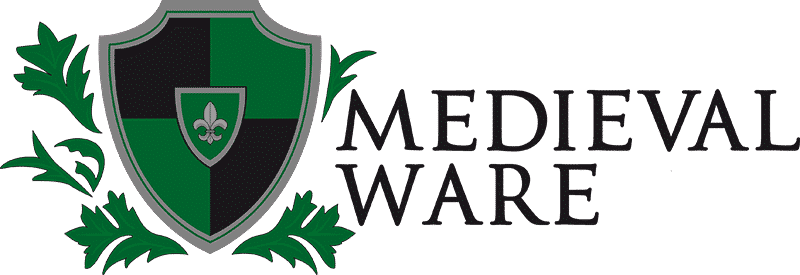
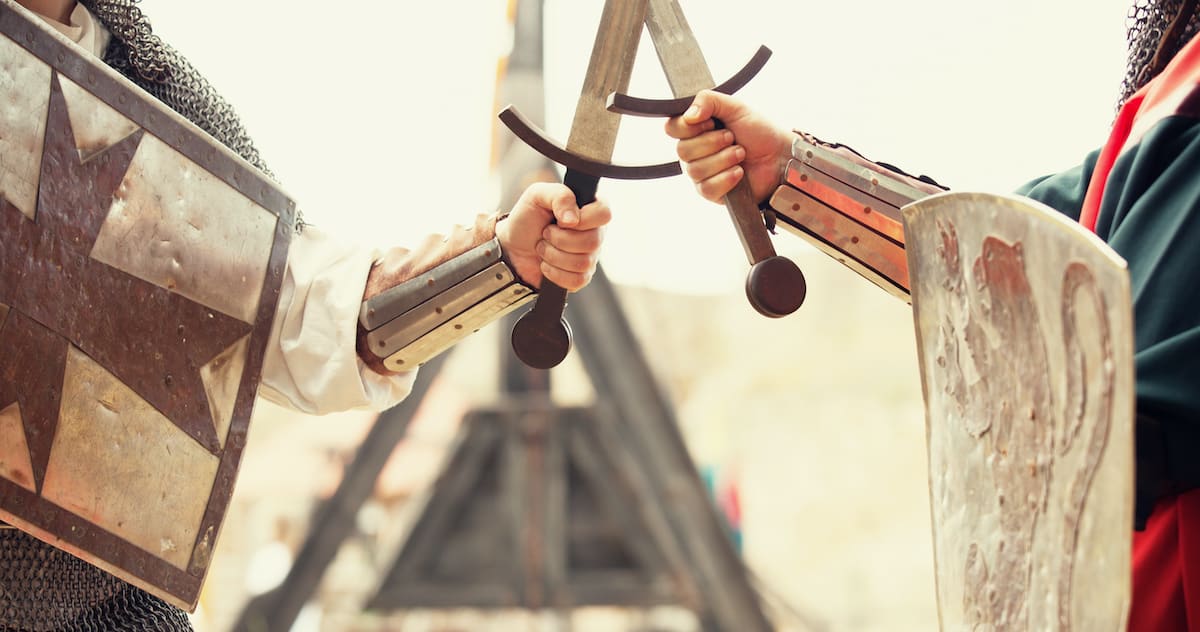 Historical Swords
Historical Swords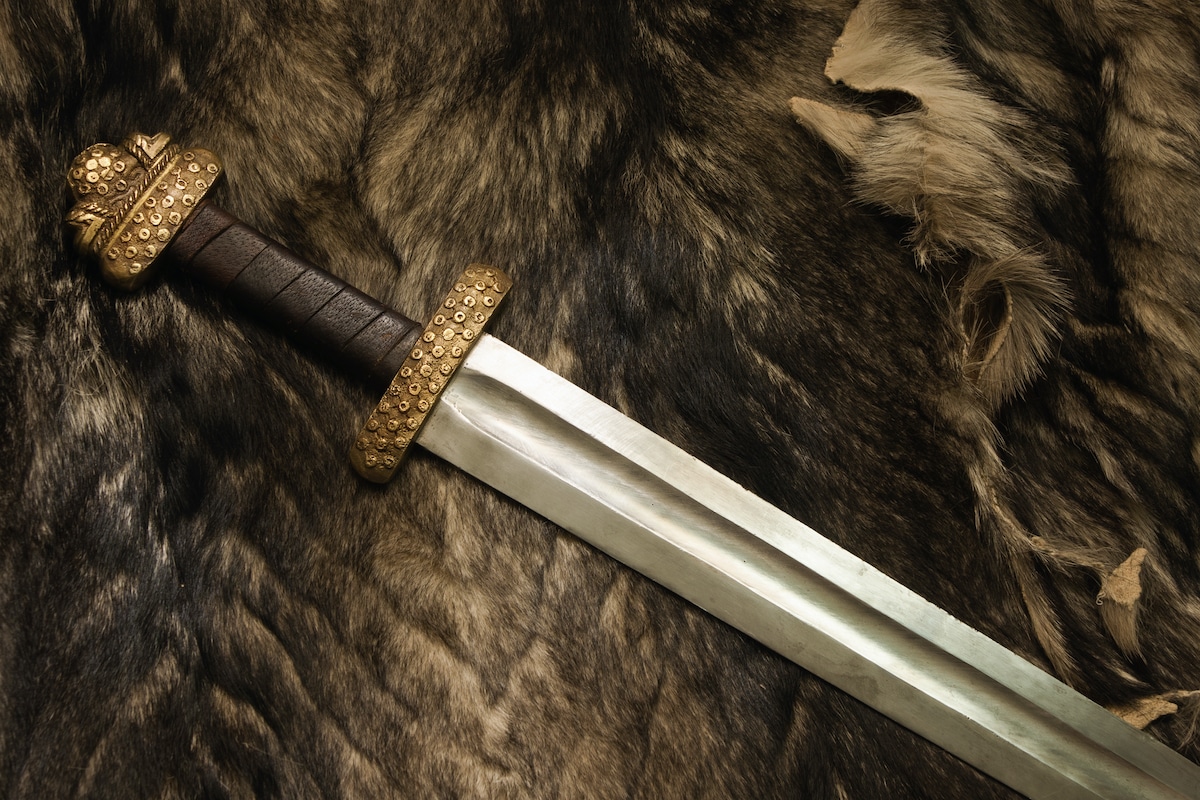 Norse & Viking Swords
Norse & Viking Swords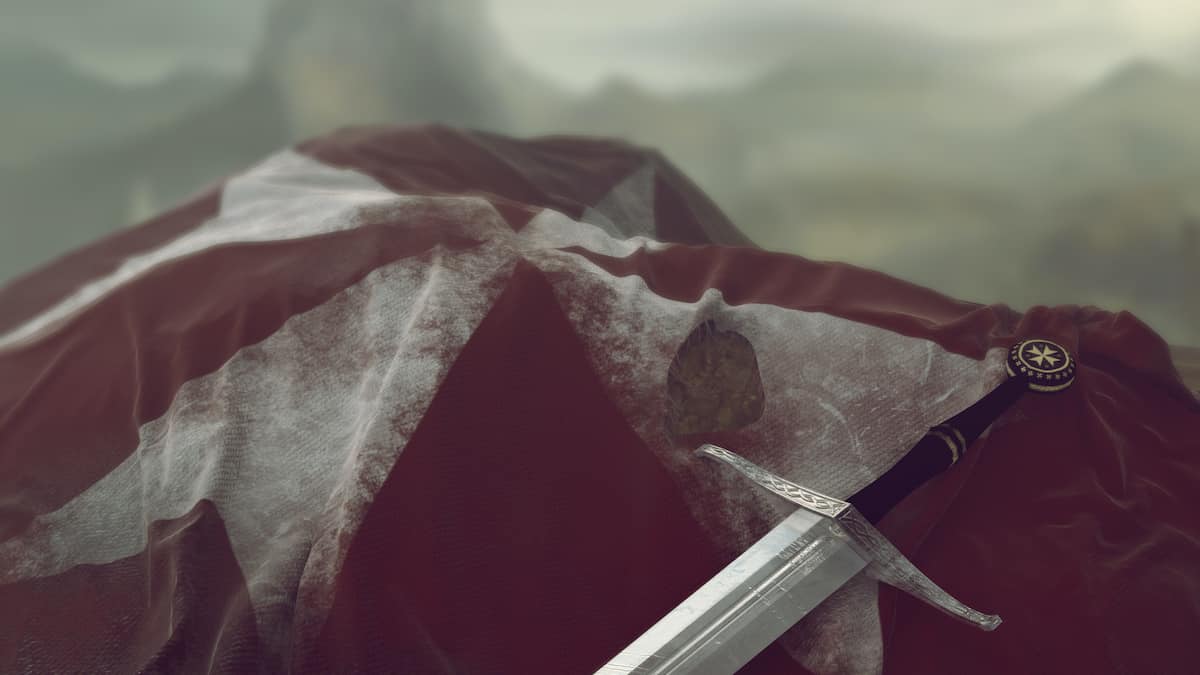 Templar Swords
Templar Swords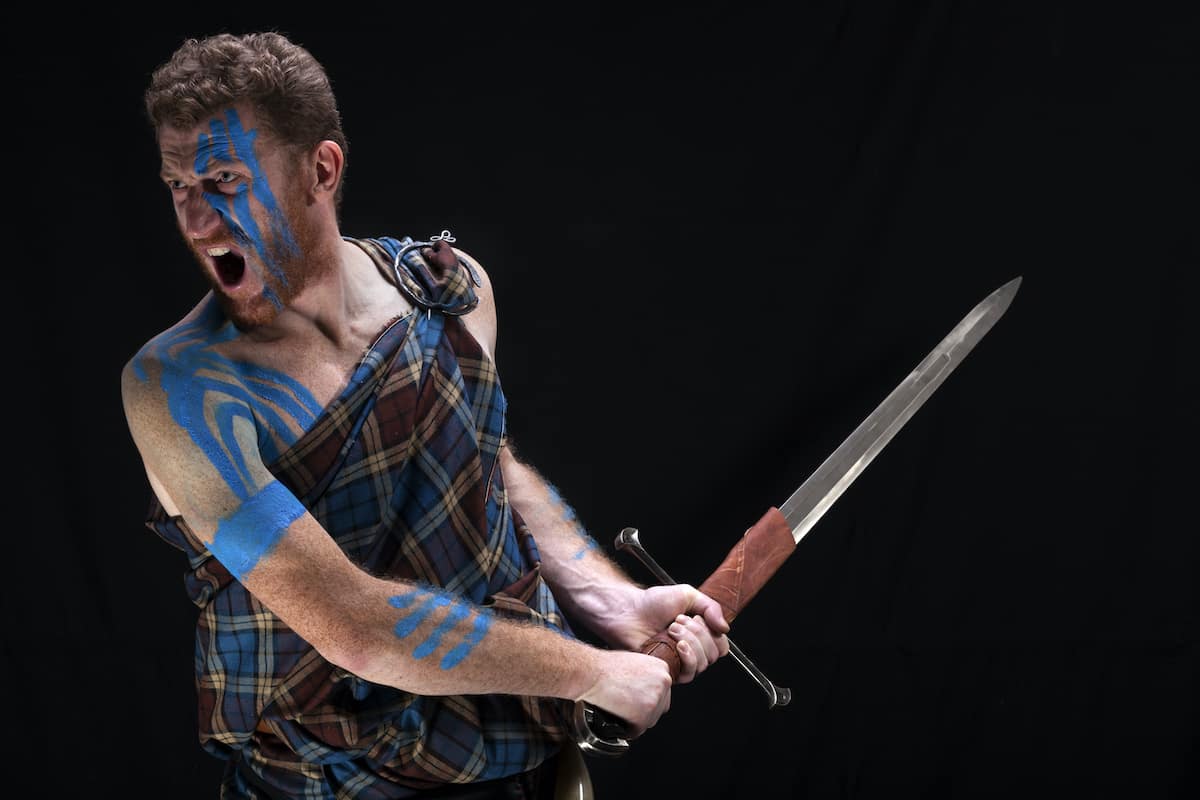 Claymore Swords
Claymore Swords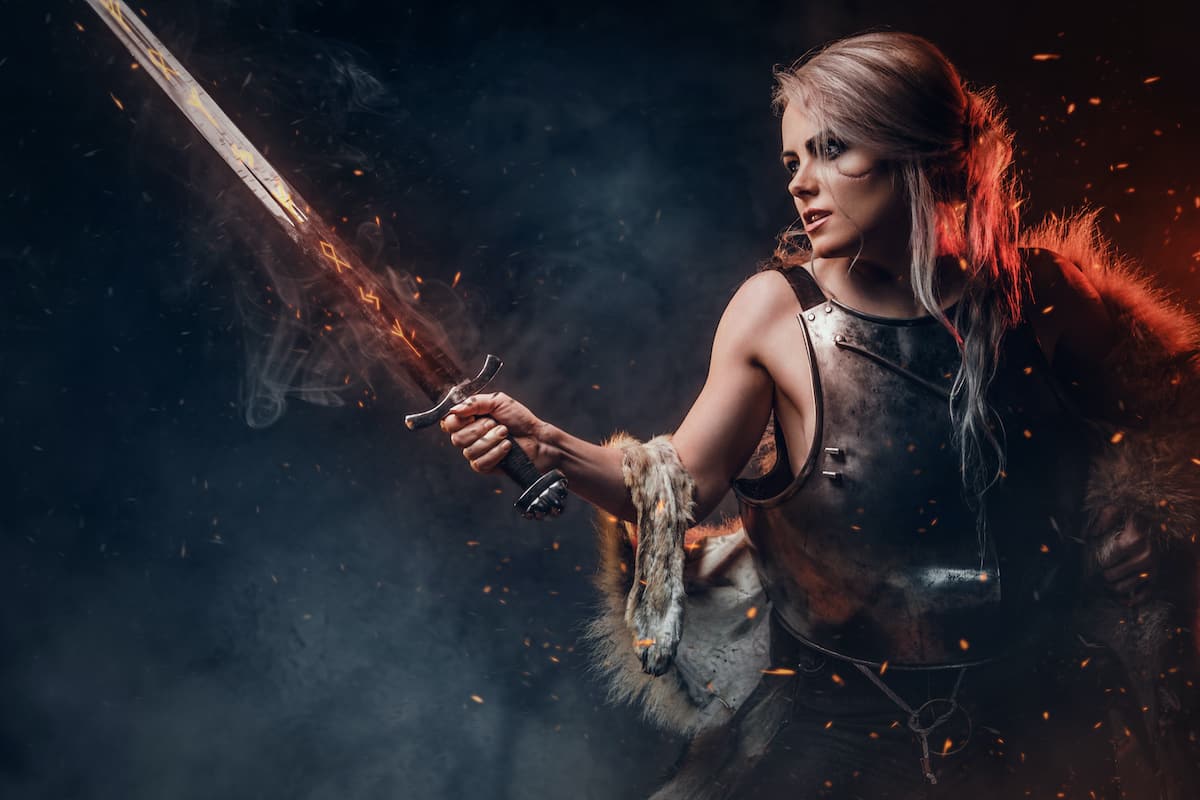 Fantasy Swords
Fantasy Swords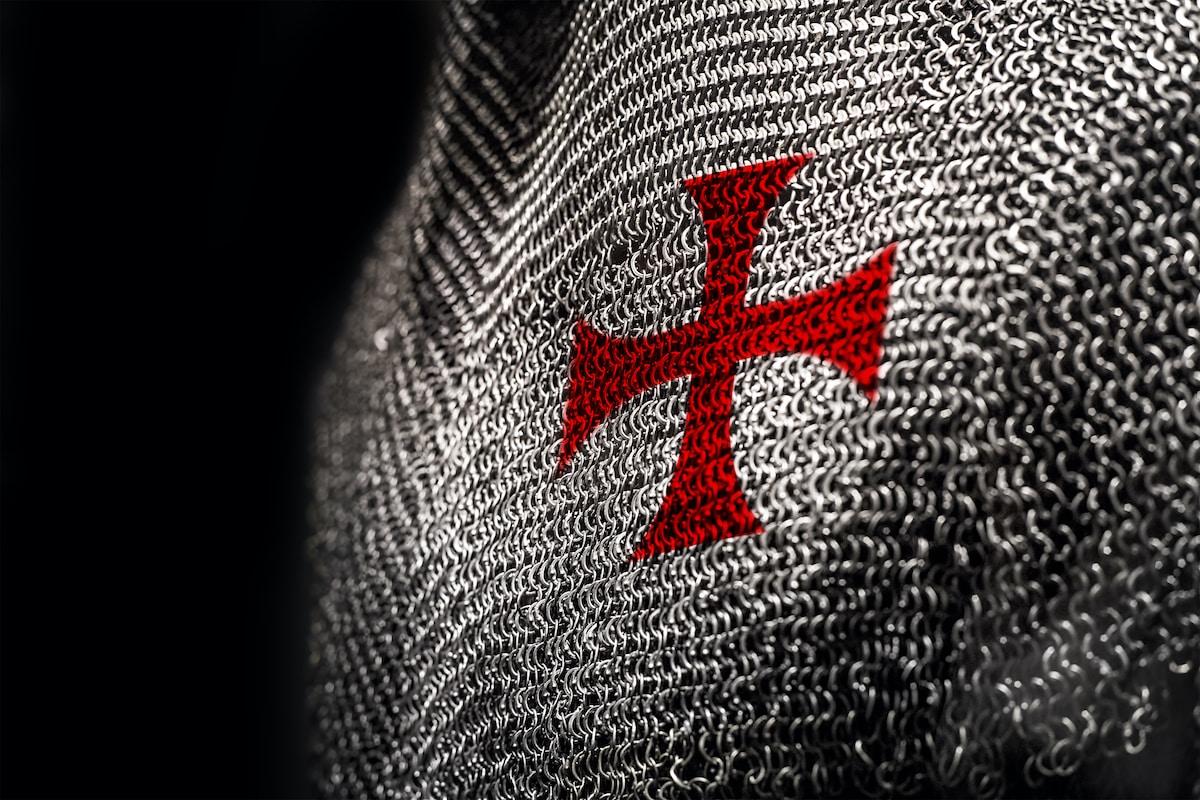 Chainmail
Chainmail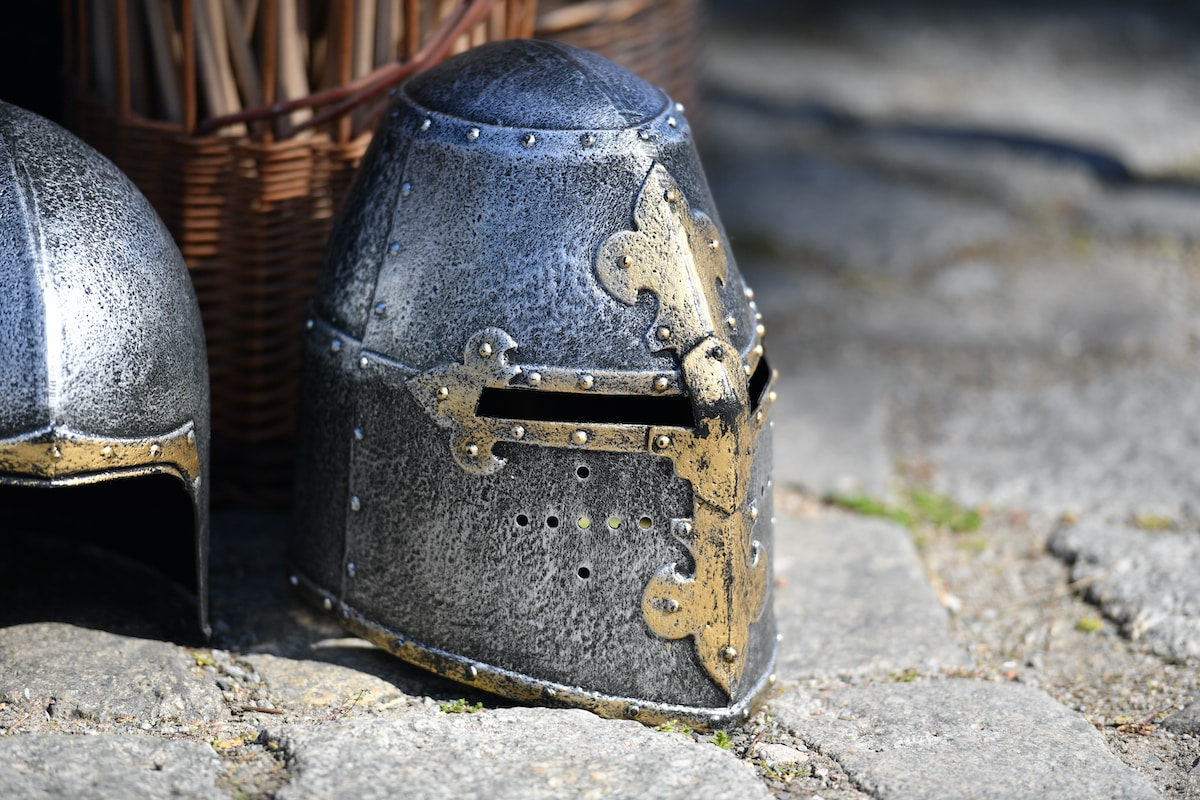 Helmets
Helmets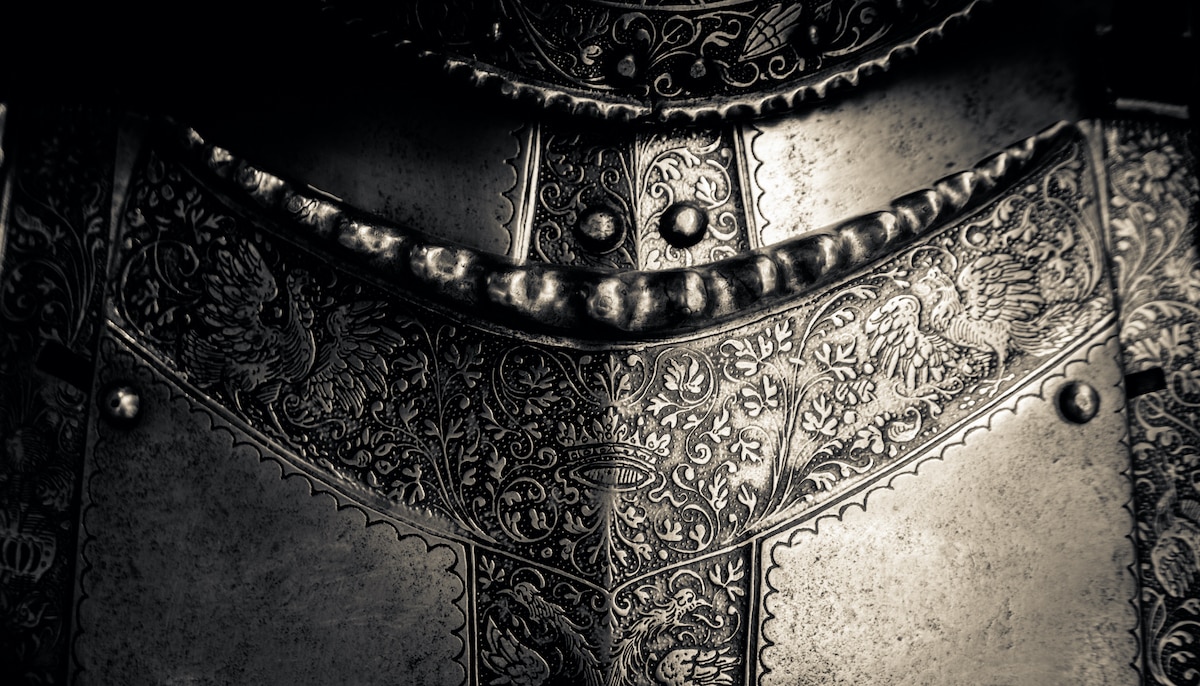 Torso Armor
Torso Armor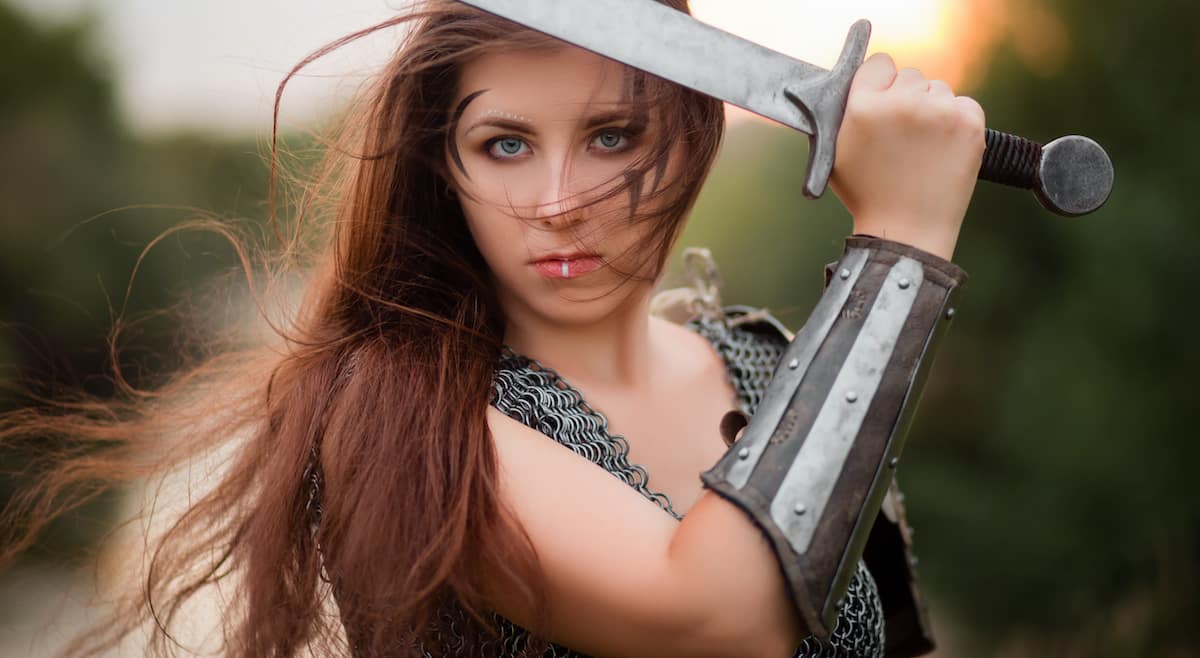 Bracers and Arm Protection
Bracers and Arm Protection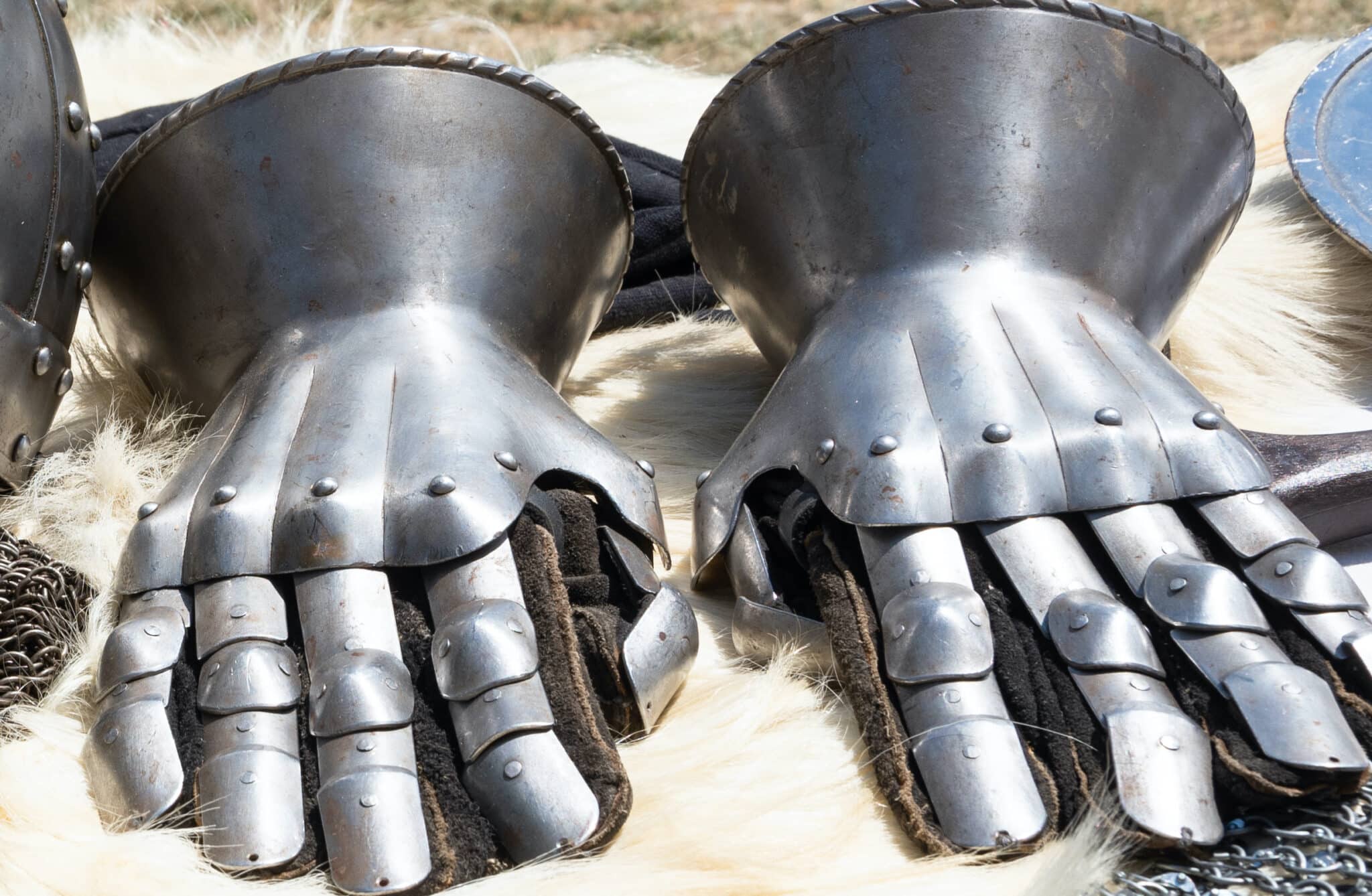 Gauntlets
Gauntlets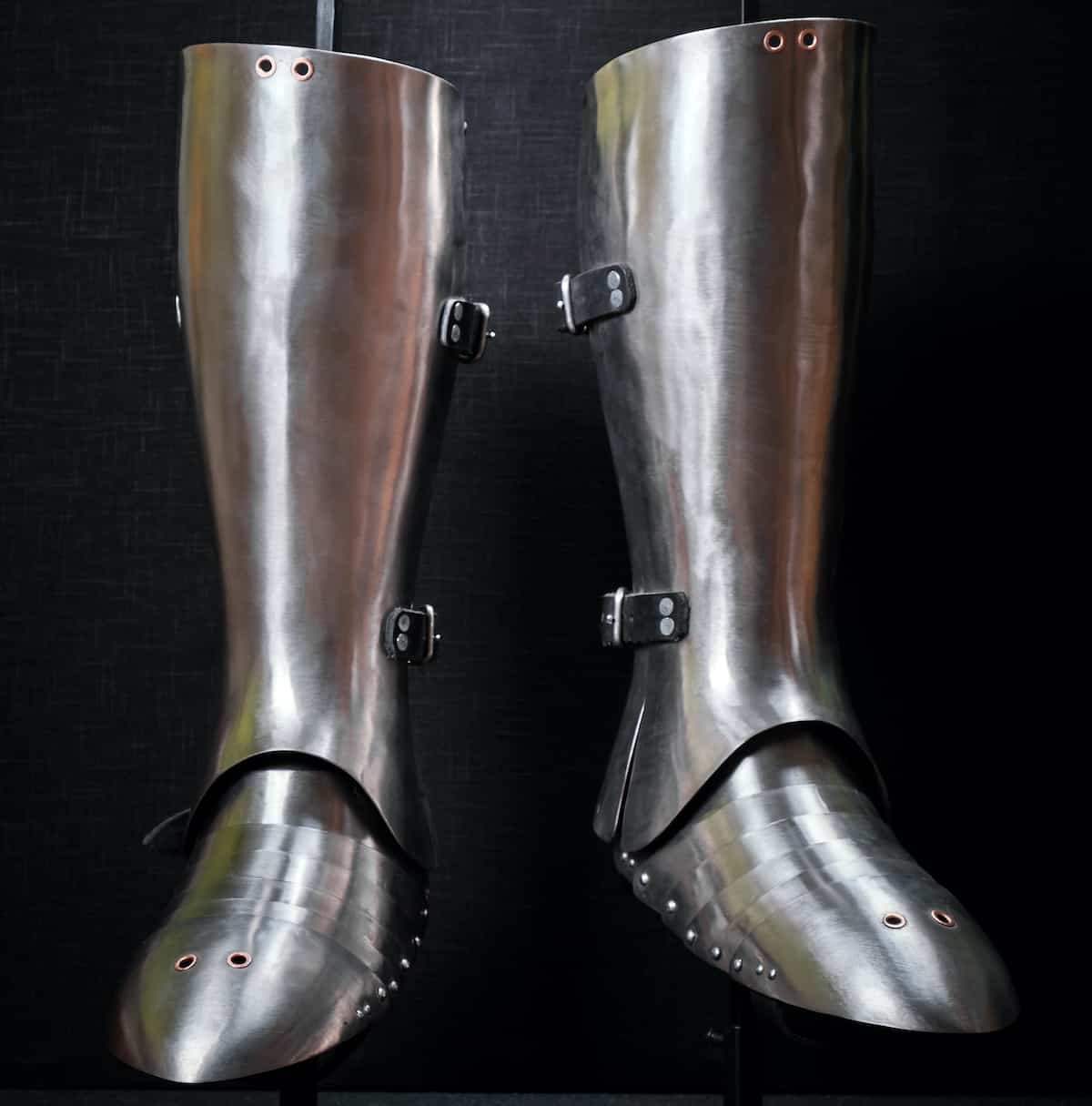 Leg Armor
Leg Armor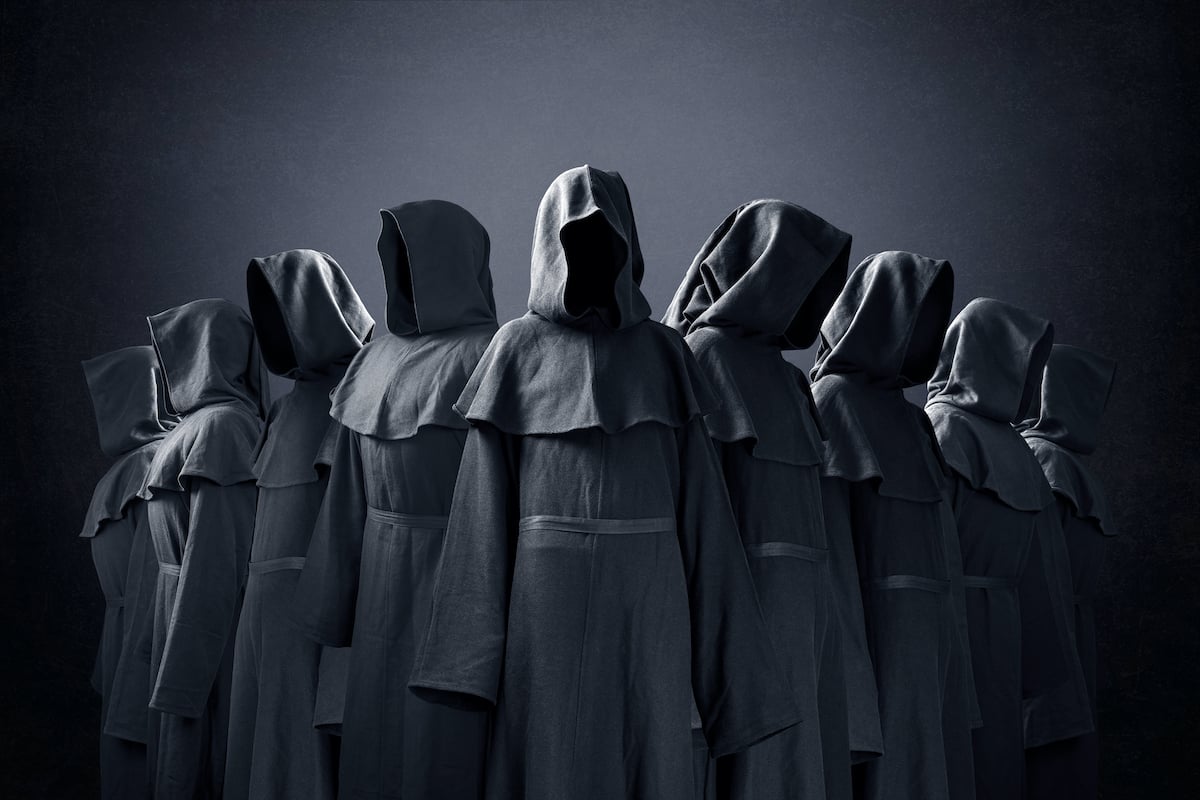 Cloaks
Cloaks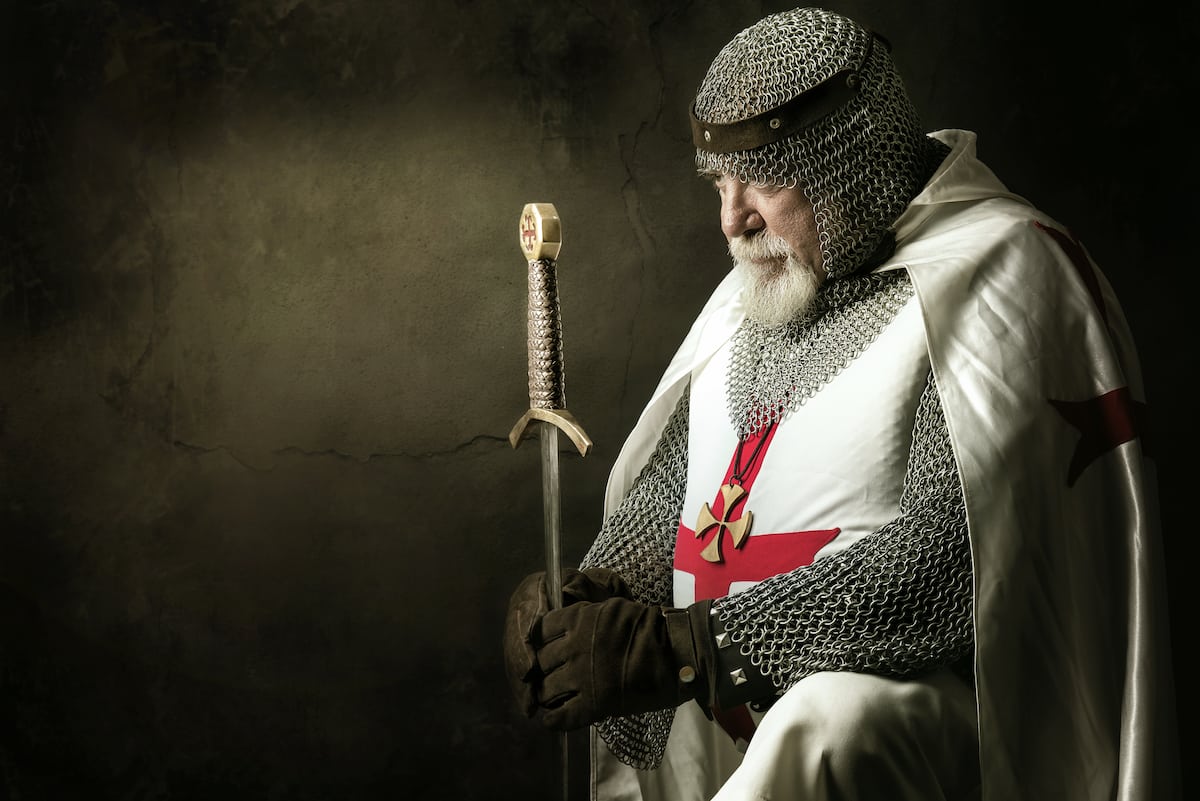 Tabards
Tabards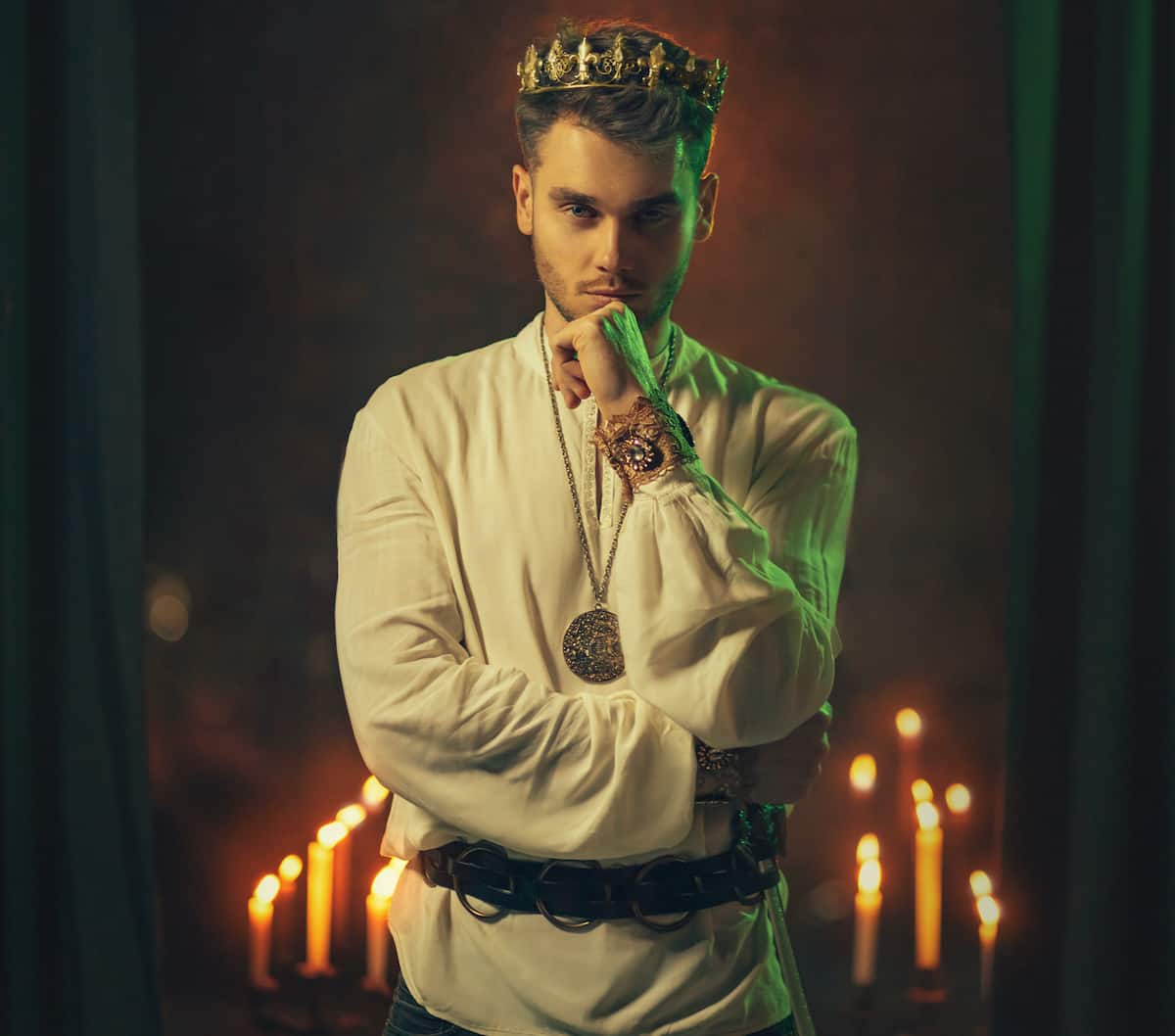 Shirts
Shirts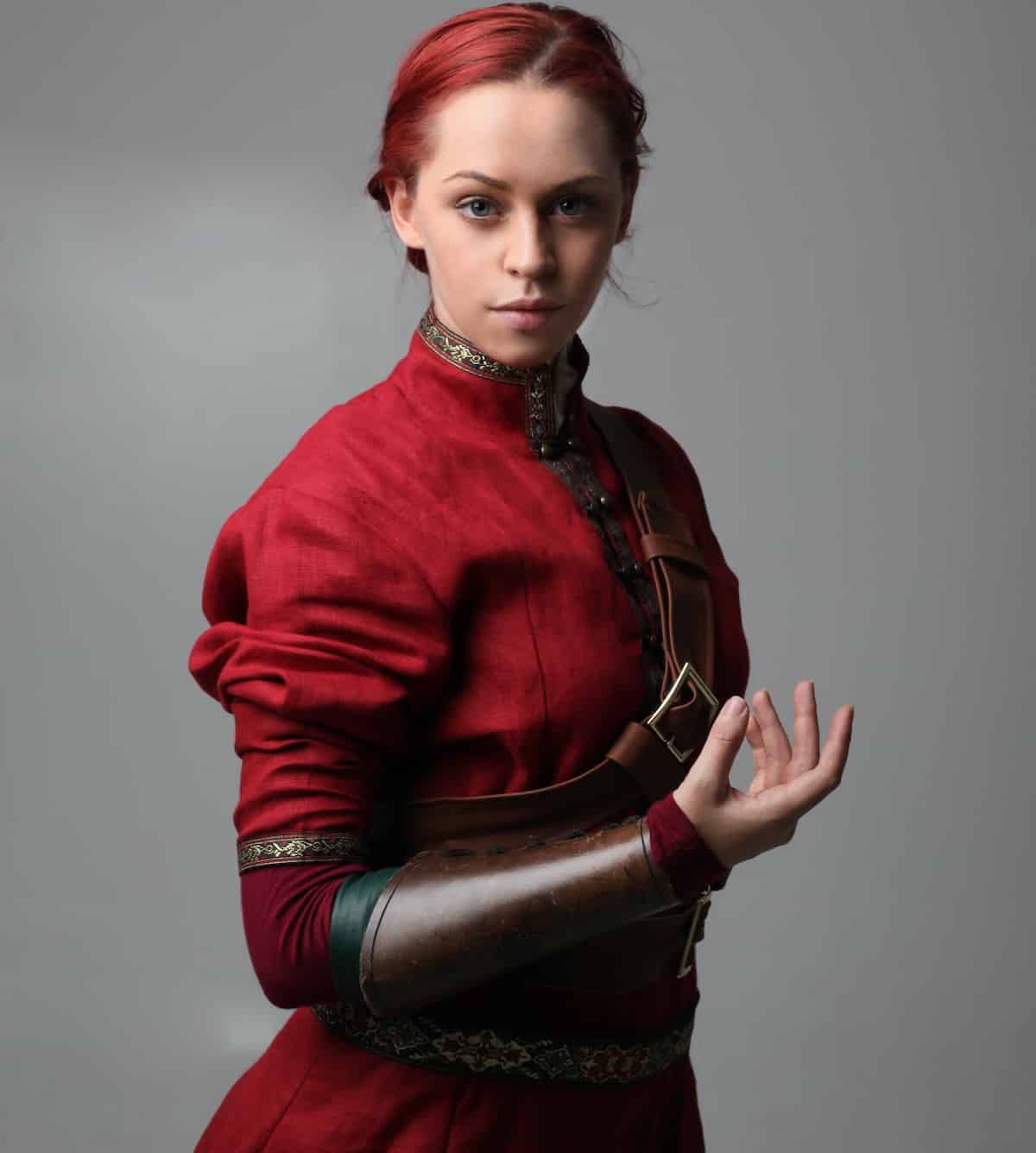 Tunics
Tunics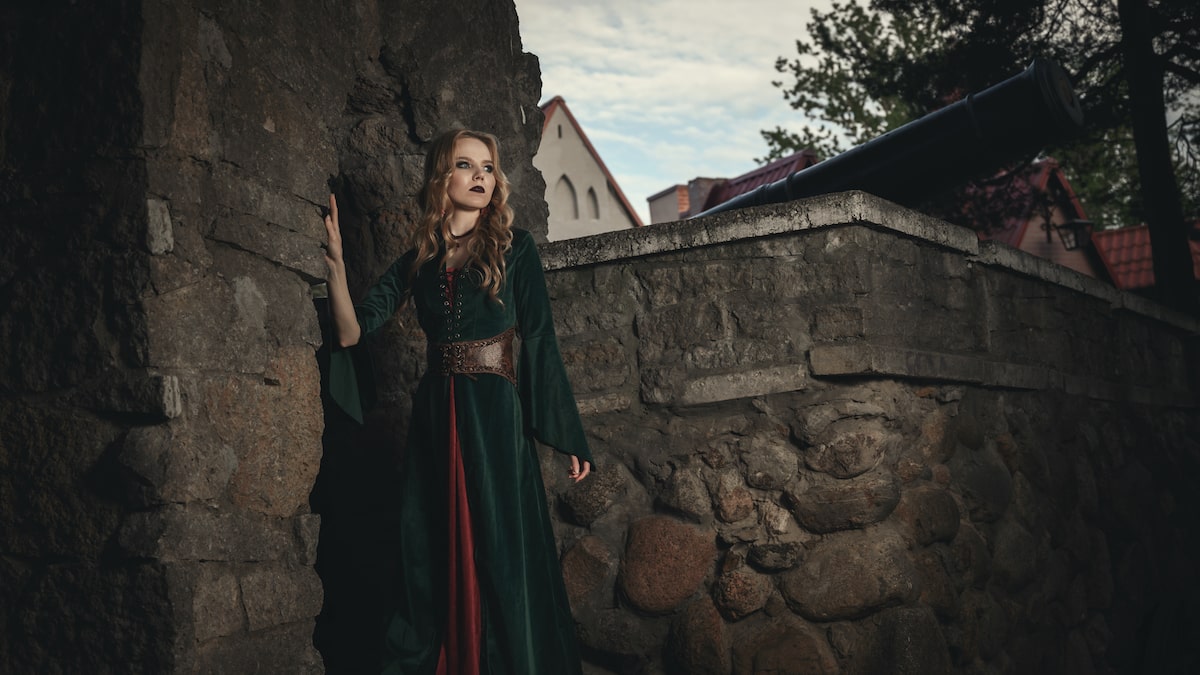 Dresses
Dresses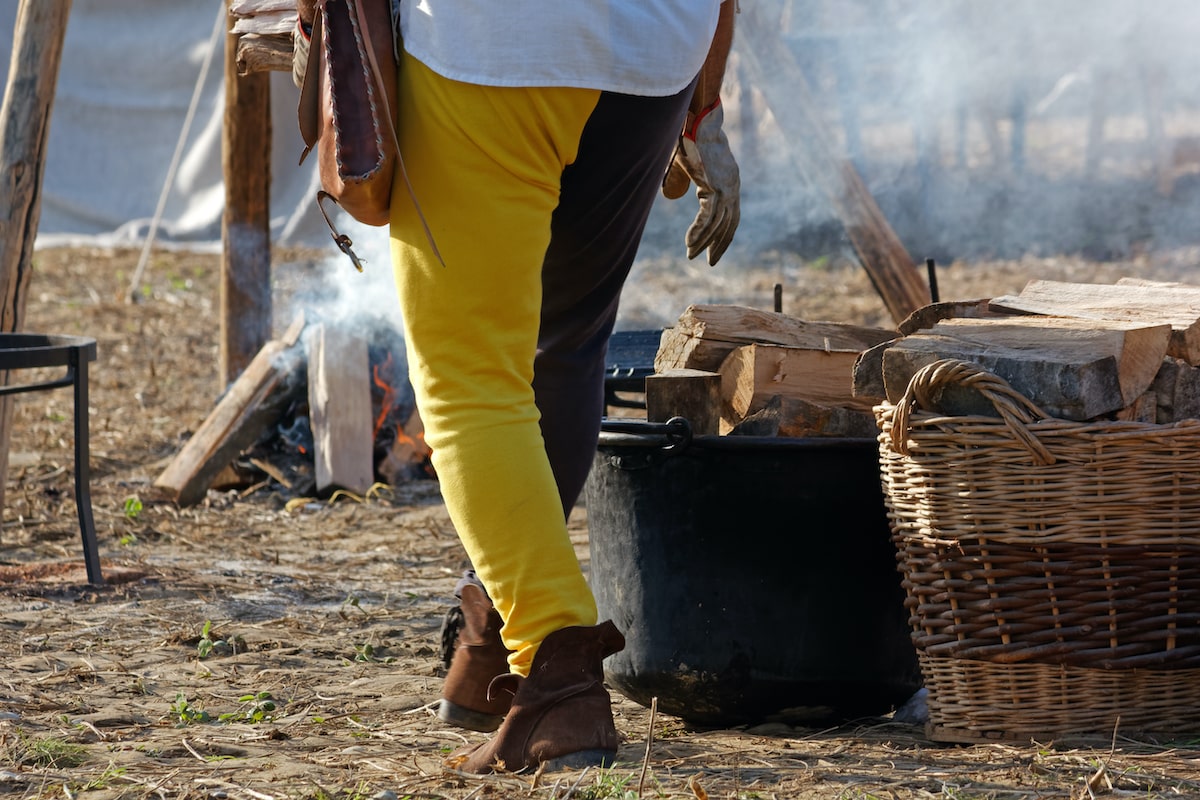 Pants
Pants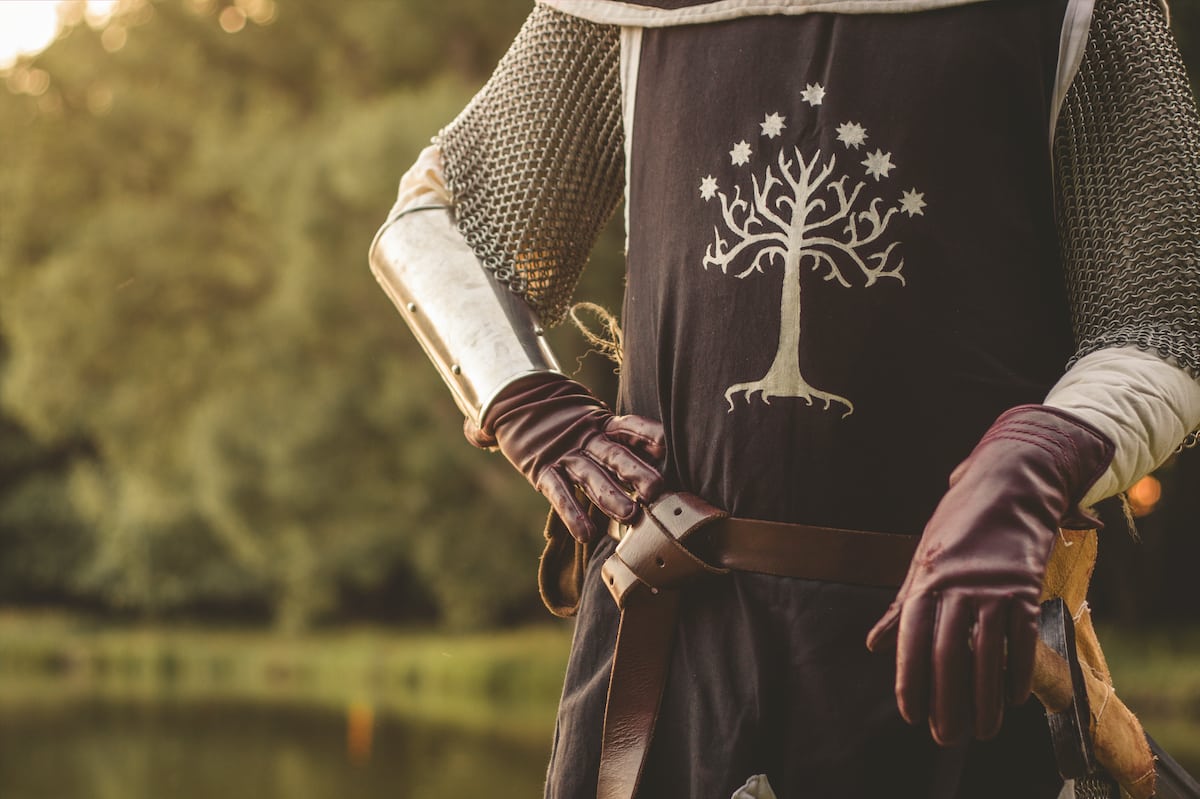 Gloves
Gloves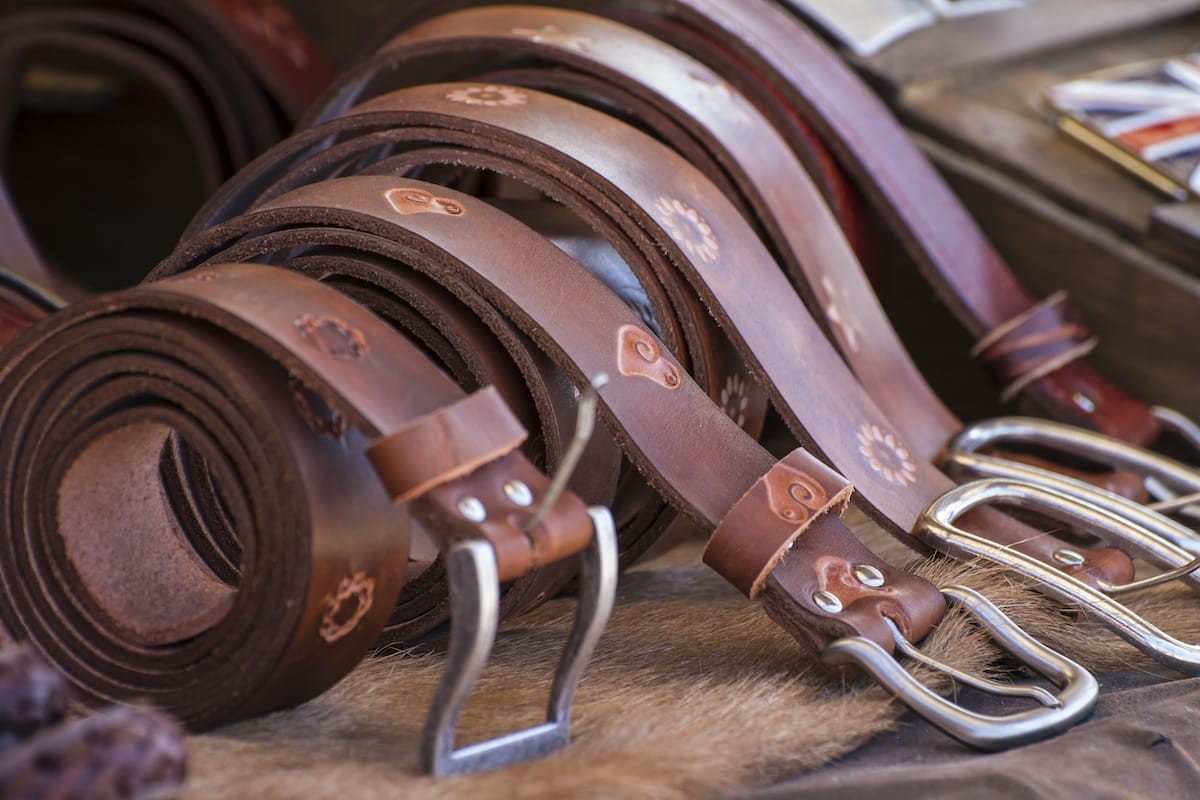 Belts
Belts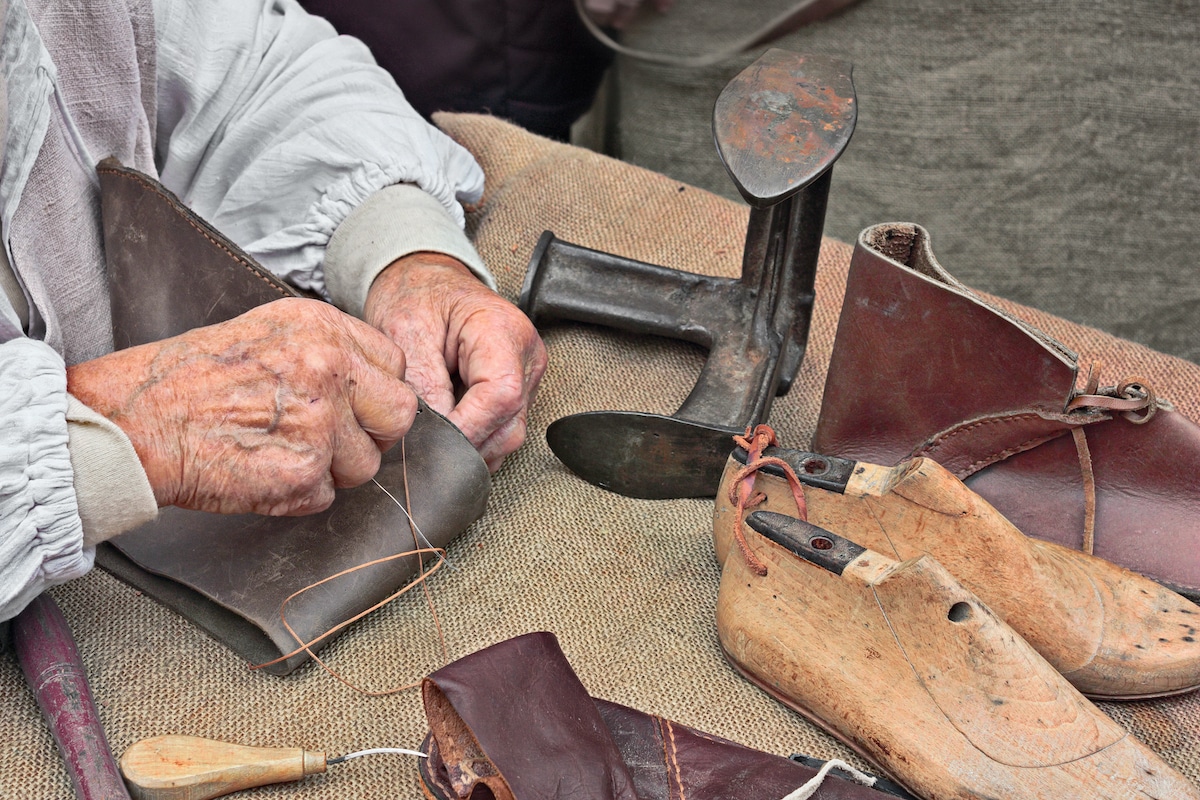 Shoes
Shoes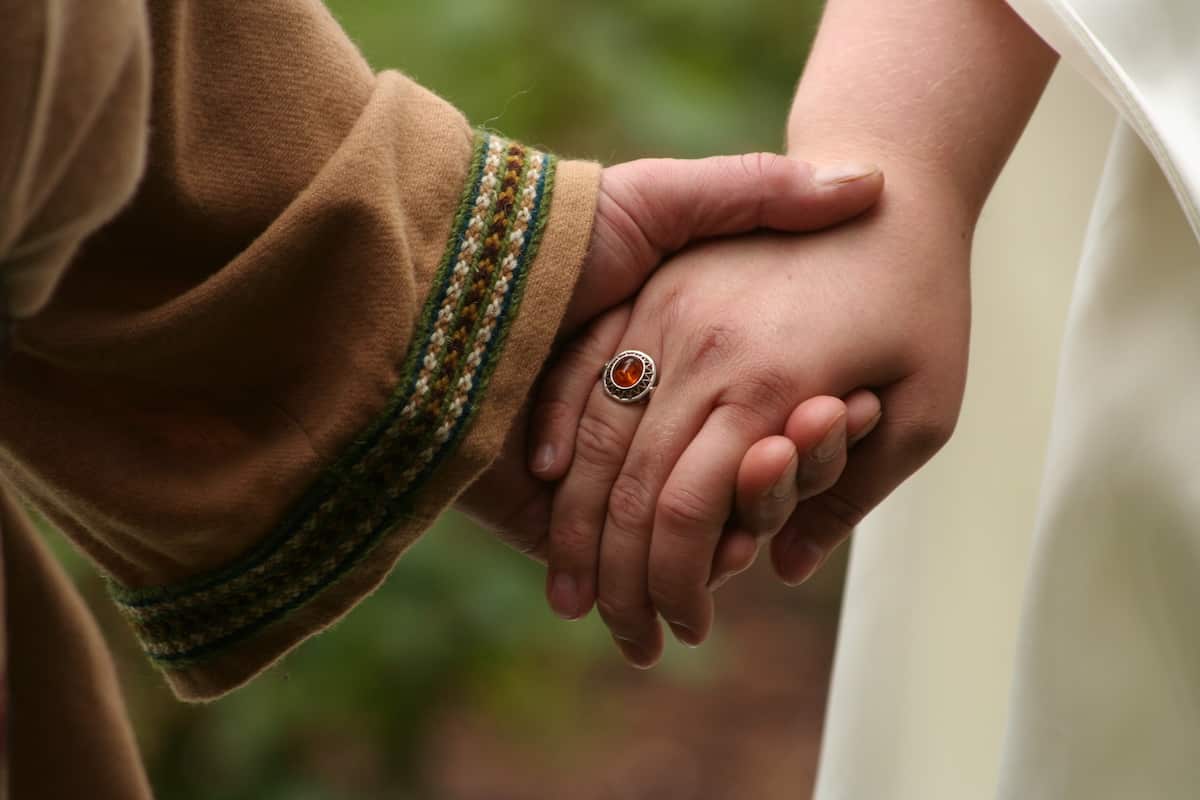 Rings
Rings Necklaces & Pendants
Necklaces & Pendants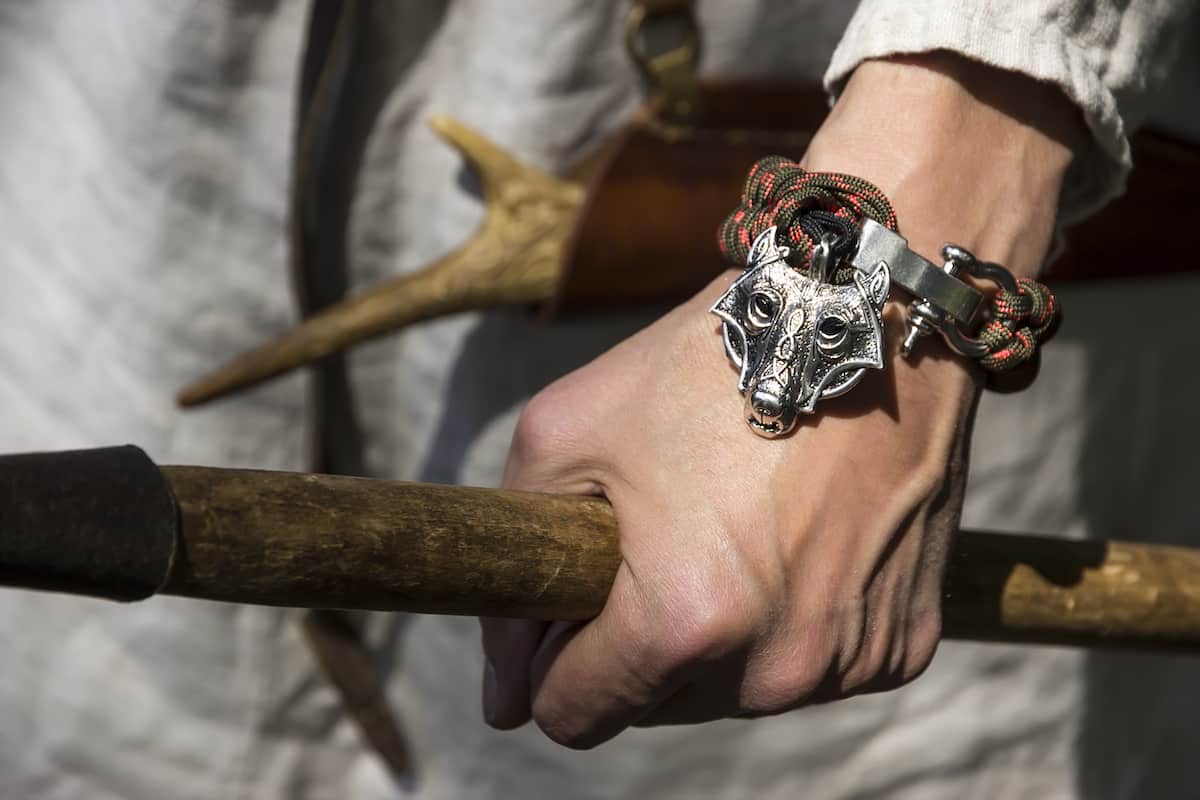 Bracelets
Bracelets